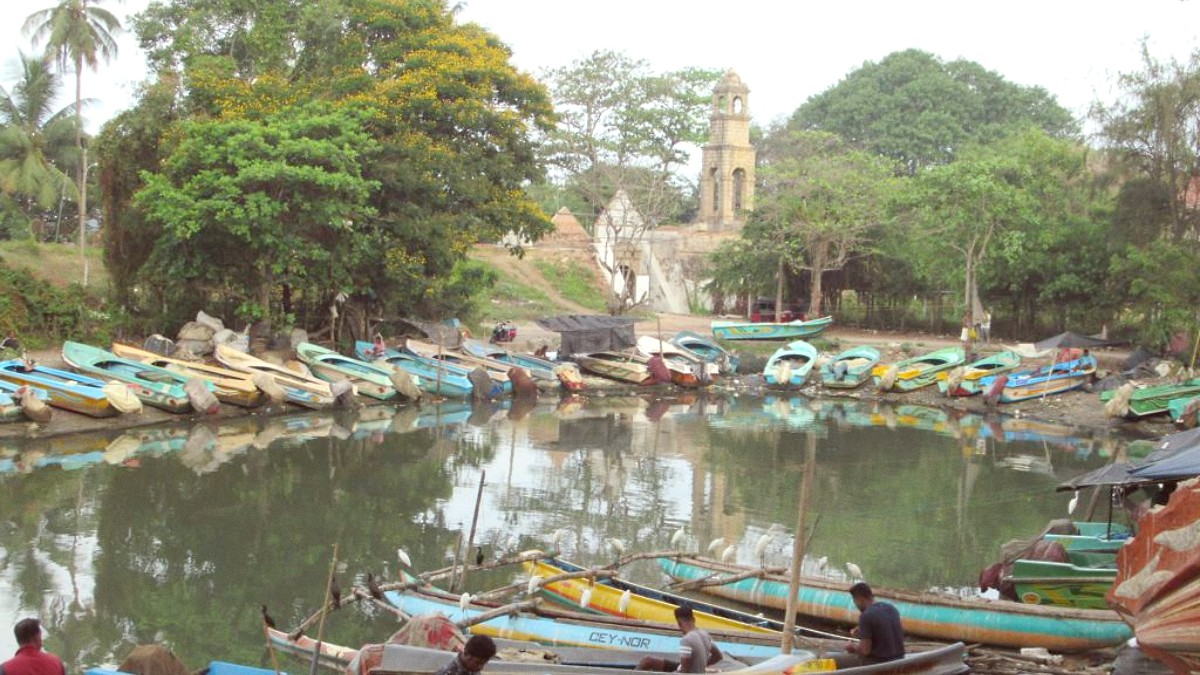
West Coast, Sri Lanka
The city's relaxed atmosphere permits visitors to ease into their journey. A diverse array of attractions stands ready for exploration, from lively markets to serene lagoons. Embrace opportunities to explore a city that seamlessly merges coastal leisure with cultural discovery. Stroll along the expansive beach, observe local fishermen, or witness architectural heritage from Portuguese, Dutch, and British influences. Negombo offers connection, culture, and tranquility, all beneath tropical sunshine. A journey here blends easy coastal living with engaging cultural encounters, setting a wonderful tone for Sri Lankan adventures.
Negombo, on Sri Lanka's west coast, presents an accessible and well-situated city for travelers. It lies approximately 37 kilometers (23 miles) north of Colombo, the island’s commercial hub. This distance translates into a short drive, especially convenient after a long flight.
The city's identity ties closely to its maritime surroundings. The Negombo Lagoon connects directly to the Indian Ocean, forming a ecosystem for diverse marine and bird life. This interplay shapes Negombo as a significant fishing center, where traditional methods continue alongside modern ones. The presence of the Indian Ocean brings a consistent sea breeze, offering some respite from the heat, especially along the beachfront.
Negombo’s rich history dates back centuries, defined by its strategic coastal position and fertile lagoon. Its name likely comes from a Tamil word, "Neer Koli Hombo," referencing the fishing community. Prior to European arrival, Negombo flourished as a port, trading with Arab merchants for Sri Lanka’s abundant cinnamon. The Portuguese established their presence in the early 16th century, valuing the cinnamon trade and the lagoon's natural harbor. In 1597, they built a fort to control spice routes and introduced Roman Catholicism, a legacy seen today in the city’s many grand churches, earning it the nickname "Little Rome."
In 1640, the Dutch took Negombo from the Portuguese, rebuilding the fort and developing trade infrastructure. They engineered the Dutch Canal, an extensive waterway system for efficient spice transport. Parts of this canal remain navigable today, hinting at sophisticated historical trade networks. The British assumed control in 1796, continuing to use the port and canal. While British architectural influence is less pronounced, they solidified the region's administrative framework. Negombo's diverse religious landscape, with temples, kovils, and mosques alongside churches, reflects centuries of community coexistence.
Witness the lasting structures of colonial defense.
Explore waterways once for spice transport.
Visit a prominent Catholic basilica.
Discover ancient Buddhist artistry and murals.
Observe local livelihood methods connecting to ancient roots.
Today, Negombo’s history interweaves with its urban landscape. The Dutch Fort remains, the canal system, and the majestic churches serve as tangible reminders of its past. The enduring fishing industry links the city to its ancient roots, while the blend of cultures and religions reflects centuries of interaction and adaptation.
Negombo's identity is deeply rooted in its maritime setting. The large Negombo Lagoon, opening into the Indian Ocean, sustains diverse marine life and bird populations. This fusion of lagoon and ocean shapes Negombo's character as a major fishing hub, where time-honored fishing traditions linger.
The city provides a travel hub for wider Sri Lankan journeys. Direct road links to Colombo facilitate onward travel to the cultural triangle, hill country, or southern beaches. A railway station and central bus stand reinforce its position as a transport nexus, enabling connections to various island destinations.
Negombo is not merely a dot on the map; it is a lively coastal community where geography defines its enduring allure and economic vitality.
Negombo emerges as a lively coastal city, presenting visitors with a compelling mix of relaxation, cultural discovery, and local charm. Life here moves at a slower pace than in bustling Colombo, yet it vibrates with its own distinct energy, especially around its famous fish market and along its popular beachfront.
The city's appeal begins with its expansive golden sandy beach, a natural draw for those seeking sun and leisure. Here, unwind under the tropical sun, swim in the Indian Ocean, or take long walks along the shore. The beach strip, specifically along Lewis Place and Porutota Road, forms the core of the tourist area, with a variety of hotels, guesthouses, and restaurants.
Negombo's identity is deeply rooted in its fishing traditions. The bustling Negombo Fish Market, known as Lellama, offers a , authentic look into daily community life and livelihood.
The city's strong Catholic faith, a Portuguese legacy, stands out. Grand churches like St. Mary's and St. Sebastian's are striking architectural sites, offering insight into community spiritual life. Buddhist temples and Hindu Kovils speak to Sri Lanka's diverse religious harmony.
The historic Dutch Canal, a colonial-era waterway, winds through the city. It presents boat tours and a calm outlook on local life along its banks. Lagoon tours are also popular for birdwatching and observing fishing activities.
Dining in Negombo focuses on fresh seafood. Restaurants serve the day's catch, prepared with local spices or in international styles. Beyond seafood, the city presents authentic Sri Lankan cuisine, with local eateries serving hearty rice and curry, hoppers, and Kottu Roti.